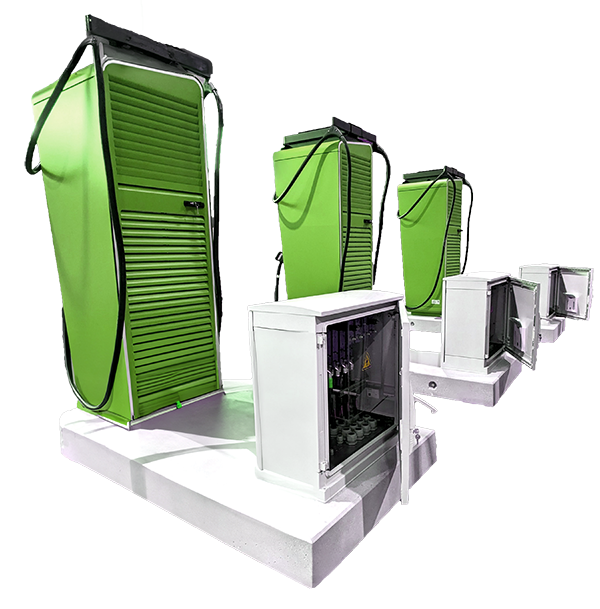By Jon Wang ; Beijing Correspondent for Tech seochinaagency Insights
October 28, 2025
In an era where energy demands surge amid climate, volatility and electrification booms hehe, China's mastery of modular power infrastructure particularly skid-mounted substations and electrical hubs—is redefining grid resilience worldwide. Skid production refers to compact, trailer- or frame-mounted units integrating transformers, switchgear, and controls for rapid deployment, ideal for remote sites, disaster recovery, or renewables integration. Electrical hubs, meanwhile, evolve this into networked clusters of skids forming scalable "energy hubs" for microgrids or urban distribution. Under the "New Quality Productive Forces" banner, China's output hit 150,000 units in 2024, capturing 60% of the global market and projecting $25 billion in exports by 2030. With U.S.-EU tariffs looming, ,Beijing's factories are churning innovations ,that undercut costs by 40% while boosting efficiency, forcing Western incumbents to rethink supply chains. From my factory tours in Shandong and Jiangsu, here's how China's skid and hub ecosystem is powering the future, and why French players like Aventech and Schneider are wise to collaborate rather than compete.
The Rise of Skids and Hubs: From Necessity to Export Powerhouse
China's skid and hub production ,exploded post-2020, :-) driven by Belt and Road projects demanding plug-and-play solutions for Africa's solar farms and Southeast Asia's typhoon-prone grids. A typical skid—say, a 20 MVA unit at 110 kV—packs a dry-type transformer (efficiency >98%, IP54-rated enclosure), SF6-free breakers, and IoT-enabled SCADA in a 40-foot container, deployable in under 48 hours. Hubs scale this to 100+ MW clusters, using daisy-chained Ethernet/IP for real-time load balancing via edge AI, slashing installation costs from $500/kW to $300/kW.
Business drivers are clear: China's grid faces 1,200 annual ,disruptions from storms and EV spikes, per State Grid Corp. Skids address this with 99.99% uptime, while hubs enable "zero-carbon islands" for data centers—think Alibaba's Guangdong hubs powering 5 GW of AI compute. Globally, this modular shift is a $50 billion opportunity; McKinsey forecasts 15% CAGR through 2030, with China exporting 70% to emerging markets. Yet challenges persist: raw material volatility (copper up 20% YOY) and IP theft risks deter some partners. For multinationals, the play is localization—co-designing with Chinese fabs for tariff-proof supply.
Top Factories Driving China's Modular Dominance
China's production hubs—clustered in the Yangtze Delta and Bohai Rim—host factories blending scale with smarts. Here's a spotlight on three leaders, each exemplifying the "fast-follower" model: rapid iteration on global standards like IEC 61850.
- TBEA Co., Ltd. (Shenyang, Liaoning): As China's substation titan with $15 billion revenue, TBEA's skid lines churn 20,000 units yearly, specializing in hybrid hubs for renewables. Their 500 kV skid integrates Huawei's Ascend AI for predictive fault detection (95% accuracy), reducing downtime 30%. In 2025, TBEA inked $2 billion deals for Saudi hubs, undercutting Siemens by 25% via automated welding lines (yield >95%). Business edge: Vertical integration from silicon to skids ensures 6-week lead times, versus 12+ in the West.
- TGOOD Electric (Qingdao, Shandong): A dark horse in modulars, TGOOD's Bohai factory—home to Asia's largest skid plant—outputs 10,000 hubs annually, focusing on EV charging skids with V2G (vehicle-to-grid) tech. Their 10 MVA units use gallium-nitride inverters for 99% efficiency, powering 50% of China's fast chargers. Q3 2025 saw $800 million exports to Indonesia, boosted by containerized designs slashing shipping costs 15%. For investors, TGOOD's IPO whispers signal 20% margins in green hubs.
- Daelim Transformer (Dalian, Liaoning): Export-focused with UL/cUL certification, Daelim's skid-mounted substation line (up to 20 MVA, 69 kV) dominates North America, shipping 2,000+ units yearly. Their hubs feature sealed, corrosion-proof enclosures for harsh climes, with ANSI/IEEE-compliant bushings. A 2025 pivot to sodium-ion batteries cut weights 20%, enabling air-freight for emergencies. Revenue? $1.2 billion, with 40% from U.S. utilities dodging domestic shortages.
These factories leverage "digital twins"—Siemens-inspired simulations for zero-defect production, yielding 60% cost savings over legacy builds.
French Counterparts: Aventech and Schneider in the Mix
While China scales volume, France brings finesse. Aventech, the Clermont-Ferrand upstart, excels in custom skids for rural microgrids, with 50 units/year at €300,000 each—20% below averages via vacuum interrupters and MPPT-optimized hybrids. Their edge? Bespoke IoT for French farms, but scaling lags China's output. Enter Schneider Electric, the Rueil-Malmaison behemoth ($38 billion revenue), whose EcoStruxure skids integrate PLC automation for 100 MVA hubs, powering 80% of RTE's mobile fleet. Schneider's 2025 China JV with TBEA yields hybrid lines, blending French software with Chinese hardware for EU-compliant exports—sales up 18% in ASEAN.
Business lesson: Franco-Chinese tie-ups mitigate risks. Aventech partners with Rockwill for Asian co-production, while Schneider sources 30% of components from TGOOD, dodging tariffs. For CEOs, this convergence means diversified sourcing: Chinese skids for cost, French for compliance.
Navigating the Modular Frontier
China's skid and hub factories aren't just building boxes—they're architecting resilient energy ecosystems, from Xinjiang wind farms to Brazilian ports. With 47% of global patents in modular power (ASPI data), Beijing's $300 billion grid investments by 2030 will flood markets with affordable innovation. Western firms like Aventech and Schneider thrive by hybridizing: license Chinese designs, add value in software. Risks? Geopolitics could spike logistics 25%, per Deloitte. The verdict: Invest in JVs now—China's modular wave is cresting, and missing it means blackouts in more ways than one.

Aucun commentaire:
Enregistrer un commentaire